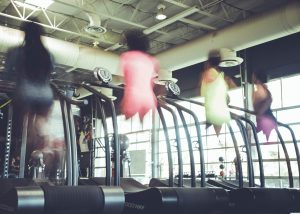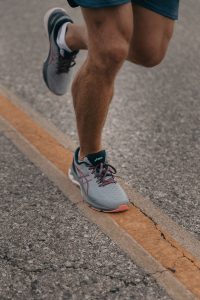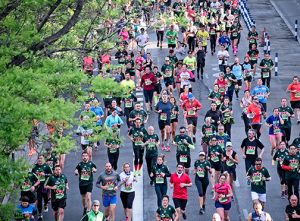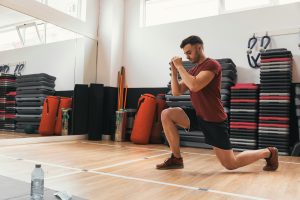The Most Important Factors In Building Muscle
 When you’re armed with knowledge of the latest scientific studies and years of experience, building muscle is easier, but it still takes hard work. Before you lift a barbell or do your first squat, you must decide your goal and why you want to build muscles. Do you want to get stronger, or is bulk and size your goal? Is weight loss part of your plan? Do you need to gain weight or only tone your body? Every goal requires a different approach and different nutrition and workout plans.
When you’re armed with knowledge of the latest scientific studies and years of experience, building muscle is easier, but it still takes hard work. Before you lift a barbell or do your first squat, you must decide your goal and why you want to build muscles. Do you want to get stronger, or is bulk and size your goal? Is weight loss part of your plan? Do you need to gain weight or only tone your body? Every goal requires a different approach and different nutrition and workout plans.
Make your diet match your goal.
Whether you want to lose weight and build muscles, build big muscles, or get stronger, you need the basics. Good nutrition is part of the basics. It includes quality macronutrients, protein, carbohydrates, and fat. Quality protein, like salmon or other fatty fish, also provides healthy fat to aid in the absorption of vitamins A, D, K, and E, the creation of hormones, and the formation of cell membranes. The amount of protein necessary will depend on factors like your weight loss goals, body weight, activity level, and age. Eat clean and choose whole foods.
Maximize your training time.
Vary your workout using bodyweight, weights, and other strength-building exercises like battle ropes. Do compound exercises that work several muscle groups at once. Start slowly, especially if you’ve been inactive for a while. Do bodyweight exercises first and build to weighted ones. Always focus on form when starting anything new. If you’re working with weights, find your one repetition maximum, the most weight you can lift without affecting your form. A personal trainer can help you do this.
Give your body a chance to rest.
More is not always better. If you’re doing intense strength-building, give the muscles you worked 48 to 72 hours for recovery. Exercising to build muscle tissue causes microscopic tears in the muscle. During the recovery period, your muscles heal and get bigger and stronger. If you overwork the muscles, they don’t have time to heal. You may lose muscle tissue.
- Eat a snack containing protein and carbs 30 minutes before working out and as soon as possible after. If you’re eating a full meal, eat 1-3 hours before exercising, depending on the size and digestibility of the food and the intensity of your training.
- Get adequate sleep. Your body repairs the tissues when you sleep. It’s when the magic takes place. Lack of sleep can interfere with muscle building. It diminishes leptin–the satiety hormone—and increases ghrelin–the hunger hormone, so you eat more.
- Include circuit training. Circuit training builds both muscle and endurance. This high-energy workout maximizes the benefits of your workout time. Include flexibility, balance, and endurance exercises in your strength training program.
- Always check with your healthcare professional before starting any fitness program or dietary change. We can help you develop a fitness program and learn the nutrition to reach your goal.
For more information, contact us today at Rising Fitness Gym



 Whether you’re trying to lose weight or are searching for other health benefits, fasting may be right for you. There are various types of fasting. Your goal, physical health, and preference will determine the one you use. You can do water fasts, 5:2 fasts, intermittent fasts, and many other variations. A 5:2 fast is where you eat normally for five days and abstain from food or eat a severely calorie-restricted diet for two days. You can do intermittent fasting in several ways, too. One of the most popular methods is to eat during an eight-hour window and fast the other sixteen hours.
Whether you’re trying to lose weight or are searching for other health benefits, fasting may be right for you. There are various types of fasting. Your goal, physical health, and preference will determine the one you use. You can do water fasts, 5:2 fasts, intermittent fasts, and many other variations. A 5:2 fast is where you eat normally for five days and abstain from food or eat a severely calorie-restricted diet for two days. You can do intermittent fasting in several ways, too. One of the most popular methods is to eat during an eight-hour window and fast the other sixteen hours.
 People in Houston, TX often put exercise on their schedule to ensure they do it daily. Not only is it easier when it’s considered an appointment but doing it at the same time daily also makes it a habit. It helps ensure the potential for success and consistency. You won’t lose weight if you only eat donuts and one salad occasionally. The same is true for getting fit. You have to be consistent to see the changes you desire. It often takes weeks to see changes, but you’ll feel the difference quicker than that.
People in Houston, TX often put exercise on their schedule to ensure they do it daily. Not only is it easier when it’s considered an appointment but doing it at the same time daily also makes it a habit. It helps ensure the potential for success and consistency. You won’t lose weight if you only eat donuts and one salad occasionally. The same is true for getting fit. You have to be consistent to see the changes you desire. It often takes weeks to see changes, but you’ll feel the difference quicker than that.
 It’s hard to stay fit when prices rise and cause your budget to stretch to its maximum. It can be done. It starts by finding ways to do it. If you already belong to Rising Fitness and pay directly, you can save money by having your membership directly taken from your checking account. Group sessions are also good ways to save money. Finding menus that are healthy and can feed the whole family for less is another important way to save.
It’s hard to stay fit when prices rise and cause your budget to stretch to its maximum. It can be done. It starts by finding ways to do it. If you already belong to Rising Fitness and pay directly, you can save money by having your membership directly taken from your checking account. Group sessions are also good ways to save money. Finding menus that are healthy and can feed the whole family for less is another important way to save.
 Many people at Rising Fitness in Houston, TX, stay active and exercise on their day away from the gym. They might walk, dance, or bike on their days away to boost their progress. One popular exercise is running. It’s exhilarating and fun to compete against yourself for distance or time. They can experience problems if their running technique needs help. Those issues can affect their health and ability to do their regular exercise program. When you improve your running technique, you can avoid injury.
Many people at Rising Fitness in Houston, TX, stay active and exercise on their day away from the gym. They might walk, dance, or bike on their days away to boost their progress. One popular exercise is running. It’s exhilarating and fun to compete against yourself for distance or time. They can experience problems if their running technique needs help. Those issues can affect their health and ability to do their regular exercise program. When you improve your running technique, you can avoid injury.
 When you’re training for a marathon, you’re attempting to get the maximum endurance from your body. It takes stamina and the best training to go the distance. It is even harder to go fast enough to win. One of the best tips for training is being consistent. You won’t improve if you train a lot in one week and do nothing the next. Finding the right blend for your routine that leaves you feeling good and one you enjoy is the best way to ensure you’re consistent.
When you’re training for a marathon, you’re attempting to get the maximum endurance from your body. It takes stamina and the best training to go the distance. It is even harder to go fast enough to win. One of the best tips for training is being consistent. You won’t improve if you train a lot in one week and do nothing the next. Finding the right blend for your routine that leaves you feeling good and one you enjoy is the best way to ensure you’re consistent.
 People who focus on a particular sport frequently only train the muscles used in that sport. There are benefits to adding cross-training. When you cross-train, you use other types of exercise besides your sport. If you’re a runner, foot or baseball player, or cycler, cross-training gives you unlimited ways to train when the weather is foul and training outdoors is limited.
People who focus on a particular sport frequently only train the muscles used in that sport. There are benefits to adding cross-training. When you cross-train, you use other types of exercise besides your sport. If you’re a runner, foot or baseball player, or cycler, cross-training gives you unlimited ways to train when the weather is foul and training outdoors is limited.
 Getting fit and living a healthy lifestyle involves more than being active and eating healthy. A good mental attitude, staying hydrated, and avoiding overindulgence in alcohol are important. You also must prioritize sleep. Most people understand how mental attitude and eliminating unhealthy substances help but fail to identify where adequate sleep is part of the picture. We’re a country that honors burning the candle at both ends. Sleep is vital to recovery and part of the process of building muscles. Without adequate sleep, you’ll never see the results you want.
Getting fit and living a healthy lifestyle involves more than being active and eating healthy. A good mental attitude, staying hydrated, and avoiding overindulgence in alcohol are important. You also must prioritize sleep. Most people understand how mental attitude and eliminating unhealthy substances help but fail to identify where adequate sleep is part of the picture. We’re a country that honors burning the candle at both ends. Sleep is vital to recovery and part of the process of building muscles. Without adequate sleep, you’ll never see the results you want.
 An injury can put your workout program on tilt. People in Houston, TX, often believe that rest and avoiding exercise is the best solution for healing or whether modifying their workout to accommodate the injury is okay. The good news is that exercise helps injuries heal. There’s no reason not to do it. You won’t want to run on a broken ankle, but that doesn’t mean you can’t sit and lift weights. If you sprained your wrist, it shouldn’t stop you from walking, running, or doing squats. Be more mindful of the muscles you use when you workout with an injury, but it’s worth it.
An injury can put your workout program on tilt. People in Houston, TX, often believe that rest and avoiding exercise is the best solution for healing or whether modifying their workout to accommodate the injury is okay. The good news is that exercise helps injuries heal. There’s no reason not to do it. You won’t want to run on a broken ankle, but that doesn’t mean you can’t sit and lift weights. If you sprained your wrist, it shouldn’t stop you from walking, running, or doing squats. Be more mindful of the muscles you use when you workout with an injury, but it’s worth it.
 One of the many benefits of outdoor workouts is avoiding pollution. It’s also one of the dangers. Pollution can trigger respiratory disease and allergies. On average, air quality is better outdoors and less polluted than indoors. Indoor air pollutants are two to five times more than they are outside. The more greenery you have, the less prone you’ll be to respiratory disease. The more greenery there is, the better the air quality. The danger arises when air quality outside is poor. Air quality alerts tend to occur in crowded cities with less greenery.
One of the many benefits of outdoor workouts is avoiding pollution. It’s also one of the dangers. Pollution can trigger respiratory disease and allergies. On average, air quality is better outdoors and less polluted than indoors. Indoor air pollutants are two to five times more than they are outside. The more greenery you have, the less prone you’ll be to respiratory disease. The more greenery there is, the better the air quality. The danger arises when air quality outside is poor. Air quality alerts tend to occur in crowded cities with less greenery.